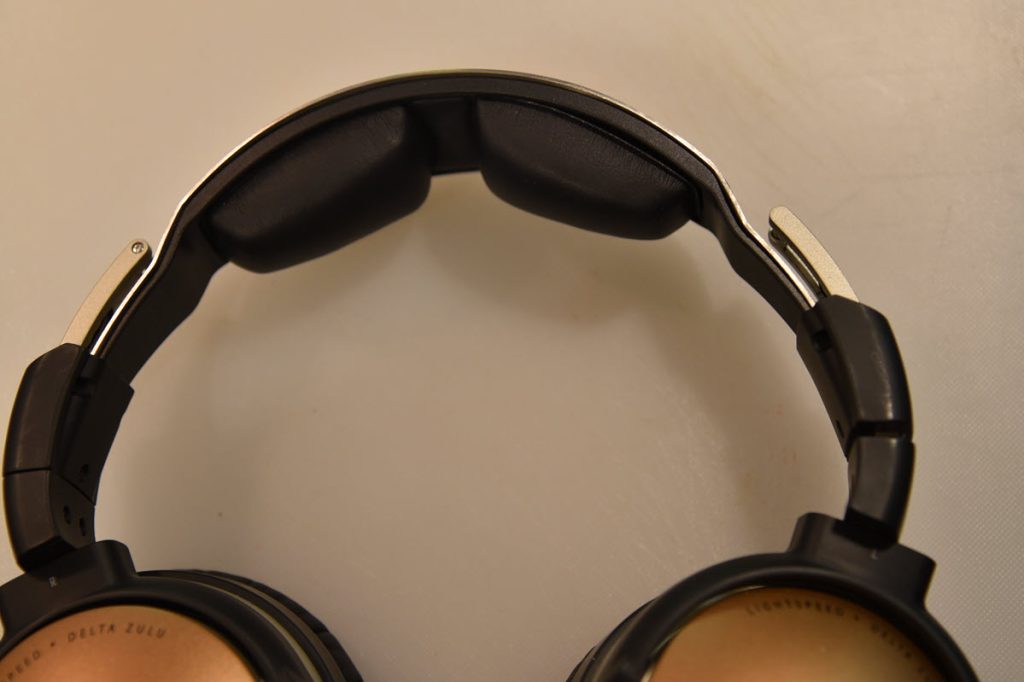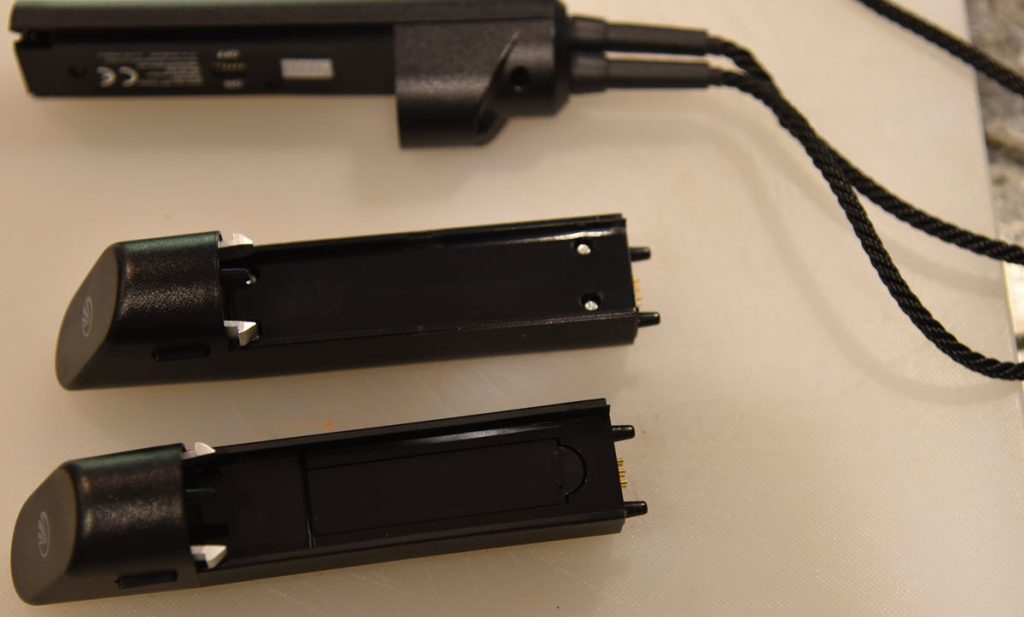Last year, I wrote a review of a new Active Noise Reduction (ANR) headset of Tely Technologies, whose product evolved from the race car field. Tely makes a very good mid-range ANR product at about the same price as the Lightspeed Sierra, which is what I’ve been using in my plane for the last dozen years. Recently, Lightspeed’s marketing manager, Eric Landry, sent me a Delta Zulu for review.
One of the first things I do after I receive a product is to look carefully at the way it was shipped, how it was packed, and examine all the instructions, warranty information, and anything else that was in the box. Lightspeed is a seasoned, high-quality company, and the packaging and printed materials are very professional, which matches my experience over the decades.
The headset travel case is beautifully designed and manufactured, including perfect red stitching. While it’s a work of art, it’s also big. If you had four or six headsets in your plane with these cases, you might not have any baggage room left. That means that you probably won’t keep the cases in the plane at all. That’s OK, of course, but you won’t be able to show off their craftsmanship to your passengers. So off to a shelf or closet they go.
Even with the headset folded up, it’s a tight fit in the storage case. Getting it back in the case after each use might be a challenge, so leaving the headset out of the case after receiving it might not be such a bad idea anyway.
As far as the headset goes, it’s beautifully designed, and the engineering and manufacturing quality is evident everywhere. You can tell that this wasn’t a thrown-together design. The cable is made of Kevlar, which makes it very strong, so it should last for a long time.
When I took the headset out of the case, I compared it to my Sierra. My Sierra weighs 16 ounces, while the Delta Zulu weighs 14.9. The difference in weight is not really noticeable, at least not to me. The Delta Zulu is supremely comfortable, and I have worn them for four hours without any issues. I do wear glasses and that doesn’t seem to matter at all.
Audio Control Box Features and Operation
The audio control box is an order of magnitude better than the one on my Sierra, and my Sierra is no slouch. As good as the Sierra is, it’s no match for the technology built into the Delta Zulu box. So what’s on the new box? Starting at the top, but
not shown in this picture, are two Kevlar cables. One cable goes to the headset and one to the panel. On my Sierra, which has a similar but not as inclusive control box, the cables come out of both ends. On the Delta Zulu, they both come out of one end, and this allows users to put the controller in a side pocket much more easily. The Kevlar cables are quite soft and flexible and sturdier than the cables on my Sierra.
Below the cables at the top of the control box is the power LED. Immediately below that is the power button. Just press and hold the power button until the power LED turns green and flashes, which indicates that the ANR is now functioning. To turn it off, press and hold the power button until the power lamp goes out. It also includes an auto shutoff, which will turn the headset off after five minutes of not being used to conserve batteries.
The dual stereo volume sliders are below that. Note that both Stereo and Mono modes are available through a configurable DIP (Dual Inline Package) switch in the battery compartment.
A small multifunction button is immediately below and referred to as the “Smart” button. It controls alarm muting for carbon monoxide (CO) and is also selectable from an Apple iPhone.
Beneath the Smart button, a smaller button controls the Bluetooth audio. The headset, when used in conjunction with the app, allows replaying of ATC clearances, and this button controls Pause/ Play of the replay function. Below this is a Bluetooth status LED lamp and Bluetooth audio volume control.
Below that is the comm priority button. Also at the bottom end is a personalization icon chip and a battery compartment release button. On the other side is a UAC port. The UAC plug, or Universal Accessory Connector, provides an access point for charging, database communications, and auxiliary audio.
When powering up the headset and when alarms and warnings need to be delivered, the unit speaks, not in tones, but in words, which is a very helpful feature.
The controller is packed with features but is surprisingly easy to use. Lightspeed nailed the ergonomics, and the control box weighs only a few ounces.
Power Source
You might expect the Delta Zulu to need its own alternator, but it uses surprisingly little power and can be powered three ways. First, it comes with two battery packs. One takes disposable AA batteries. The other battery pack uses lithium-ion rechargeable batteries.
The set includes a wall plug-in power supply and cable. The cable may be used in flight to charge the lithium-ion batteries or to power the unit.
Audio Quality
Straight out of the box and plugged into my panel and powered up, the Delta Zulu sounds noticeably better than my Sierra. Of course, it’s almost twice the price, so I would have expected that. However, my Sierra is an excellent headset, so I really wasn’t prepared for how good the Delta Zulu is.
My panel contains an Avidyne 540 and Avidyne 240 audio panel. It also contains a Sirius XM stereo audio system. The Delta Zulu is both clear and crisp for voice communications and of excellent fidelity for music and other entertainment. I had excellent reports from ATC on the audio quality of my transmissions, so I know that the attached boom mic is of excellent sound quality, too.
Apps
At first, I was concerned because the two free, downloadable apps are Apple-only, but I use Android on my cellphone. I had an epiphany, however, when I realized that the apps would work on both the iPhone and iPad. Since I’m a ForeFlight user, I also have an iPad Mini, so the two apps are compatible. Probably most of us are using ForeFlight these days, so that isn’t a showstopper.
FlightLink App
Once loaded on your iPhone or iPad and Bluetooth has been paired with your headset, you can capture clearances and replay them with the push of a button on your headset controller. Many new audio panels, including my Avidyne AMX-240 unit now include this feature, but if you have an audio panel that doesn’t, this is a great feature.
Lightspeed App
The Lightspeed app is is an excellent iPad/iPhone app but, like the FlightLink app, it’s not available for Android. For those of us already running ForeFlight in our planes, this won’t be a problem. For the rest of us, it will be. However, on the plus side, you don’t need this app to take advantage of most of the headset’s features. If you do have an iPhone 6 or higher or an iPad made after 2017, then you’re in luck. The app is available from the Apple App Store for free, but it only works on the Delta Zulu headset. Here are some of the features of the app:
- Headset software updates are available through the app, and you will be notified via the app if one is available.
- There is an amazing function called “HearingEQity.” You only need to run this app for the initial headset test and setup. After that, your hearing data profile is saved on your headset. When you run this app, your headset will enhance the frequency response that you need. In my case, I’ve been flying for almost 60 years, and I have some high frequency loss in my hearing. This app will adjust the treble (high frequency response) to compensate. In essence, my headset becomes a giant aviation hearing aid. Of course, if you have hearing aids already, you might consider removing them when you fly with this headset.
The Delta Zulu is rather pricey at almost $1,100, as is the Bose headset. If you’re not totally put off by the price, I think you’ll find that this headset is significantly better than the Bose and anything else out there. In 2023, this is the best headset in the aviation marketplace. If you’re looking for a headset to last 10 years, this won’t disappoint.













